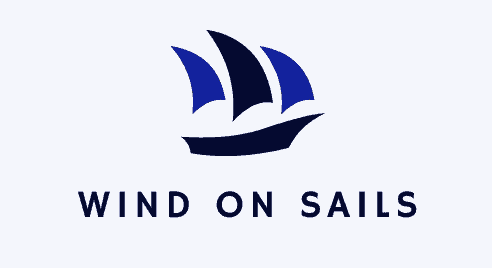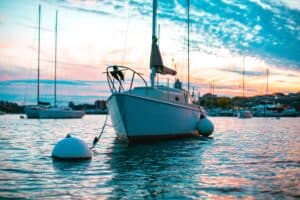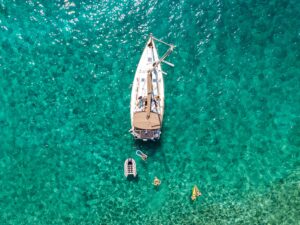Sailboats are fascinating vessels that rely on the power of the wind to navigate the open waters. Understanding the parts of a sailboat are essential whether you’re a seasoned sailor or someone who’s just getting started. In this comprehensive guide, we will delve into the anatomy of a sailboat, exploring each component and its role in harnessing the wind and propelling your vessel forward. So, grab your sailing hat and let’s embark on this educational journey!
Table of Contents
Hull and Keel
Hull
The hull forms the main body of the sailboat and provides buoyancy and stability. It keeps the boat afloat and acts as a protective shell. Typically constructed from materials like fiberglass, wood, or metal, the hull’s shape and design impact the boat’s performance and seaworthiness.
Keel
Located beneath the hull, the keel is a weighted fin or centreboard that provides stability and prevents sideways drift. It counterbalances the force of the wind on the sails, helping to maintain the sailboat’s upright position and minimizing the risk of capsizing. Check out this article for further information.
Rudder
The rudder is a vertically mounted flat plate or fin located at the stern (rear) of the sailboat. It is responsible for steering the boat by controlling the flow of water passing by it. Connected to the helm or tiller, the rudder allows the sailor to change the boat’s direction and navigate through the water.
Motor and Propeller
Some sailboats are equipped with an auxiliary motor for manoeuvring in tight spaces or when there is no wind. The motor propeller helps propel the boat when the sails alone are insufficient.
Deck and Cockpit
Deck
Positioned on top of the hull, the deck is a flat surface that serves as a platform for crew members to move around. It also houses various fittings and equipment.
Cockpit
Found in the rear portion of the deck, the cockpit is the area where the helmsman or skipper steers the sailboat. It is typically equipped with the helm, tiller, or steering wheel, as well as necessary instruments and controls.
Winches
Winches are mechanical devices used to handle and control the tension of the lines on a sailboat. They consist of a drum and a crank handle. By turning the handle, sailors can increase or decrease the tension of the lines, allowing for efficient control of the sails and the various rigging elements.
Cleats
Cleats are fittings found on the deck used to secure lines and ropes. They provide a means of temporarily holding the lines in place, allowing sailors to free up their hands and focus on other tasks. Cleats come in various shapes and sizes and are essential for maintaining control and stability while sailing.
Anchor and Windlass
The anchor and windlass are essential for mooring the sailboat. The anchor secures the boat in place, while the windlass is a mechanical device used to raise and lower the anchor efficiently.
Mast, Boom, and Rigging
Mast
The mast is a tall, vertical spar located on the deck, extending upward. It provides support for the sails and enables their efficient capture of wind. Typically made of aluminium or carbon fibre, the mast plays a vital role in the boat’s stability and performance.
Boom
Connected to the mast, the boom is a horizontal spar that holds the lower edge of the mainsail. It allows for control over the sail’s position and shape, influencing the boat’s speed and maneuverability. The boom is pivotal in adjusting the angle and tension of the mainsail.
Rigging
The rigging refers to the network of cables, wires, and lines that support and control the sails. This includes components such as shrouds, forestays, backstays, and halyards. Rigging plays a crucial role in maintaining the mast’s stability, tensioning the sails, and controlling their position.
Sails and Related Components
Mainsail
The mainsail is the largest sail on a sailboat, positioned on the mast and boom. It captures the wind’s power and generates forward propulsion. Adjusting the mainsail’s angle and tension influences the boat’s performance.
Jib and Genoa
The jib and genoa are smaller headsails located at the bow or front of the boat. They work in conjunction with the mainsail to optimize sail area and enhance manoeuvrability.
Spinnaker
The spinnaker is a larger, lightweight sail used for downwind sailing. It is typically deployed when the wind is coming from behind the boat.
Cabin
Berths
The berths are sleeping quarters on a sailboat. These are designated areas, often equipped with cushions or mattresses, where crew members can rest during extended voyages. Berths come in various sizes and configurations, ranging from single to double or bunk beds.
Head
The head refers to the sailboat’s bathroom facilities. It typically includes a toilet, sink, and sometimes a shower. On smaller sailboats, the head may be compact and shared, while larger vessels may have multiple heads for increased convenience.
Galley
The galley is the sailboat’s kitchen area. It usually includes a stove, sink, and storage space for food and cooking utensils. Some sailboats may also feature a refrigerator or icebox for preserving perishable items during longer journeys.
Saloon
The saloon is the main living area of the sailboat. It often serves as a multipurpose space, combining seating, dining, and socializing. The saloon may feature a table, seating benches or settees, and storage compartments for personal belongings.
Navigation Station
The navigation station is a dedicated area on the sailboat where navigational equipment, such as charts, compasses, and GPS systems, are kept. It serves as a central hub for planning routes, monitoring the boat’s position, and communicating with other vessels or shore stations.
Summary
Understanding the different parts of a sailboat is fundamental to becoming a proficient sailor. By familiarizing yourself with the anatomy of your vessel, you gain the knowledge and confidence to navigate the open waters with skill and precision. From the hull and deck to the mast, sails, and rigging, each component plays a crucial role in harnessing the wind’s power and propelling your sailboat on unforgettable adventures. So, keep learning, keep exploring, and may fair winds always fill your sails!




